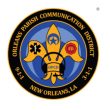Lots of work needed to make 700 MHz proposal a reality
KANSAS CITY—Myriad technical, financial and operational challenges surround the proposed 700 MHz public-private partnership model that is designed to build and maintain a nationwide broadband network for public safety, but leaders within the Association of Public-Safety Communications Officials (APCO) remain supportive of the notion.
Craig Jorgenson, APCO’s representative on the Public Safety Spectrum Trust (PSST) board, and Robert Gurss, APCO’s director of legal and government affairs, both said media reports that APCO has considered relinquishing its spot on the PSST board are untrue.
“It’s always an option, but I’ve never been in a meeting where that’s been said,” Jorgenson said after participating on a panel discussing the matter yesterday.
Both Jorgenson and APCO have been critical of PSST operations in the past, with Jorgenson citing a lack of “transparency” within the PSST, and APCO asking the FCC to reconstitute the PSST board or replace it as the public-safety broadband licensee.
While such differences exist, Jorgenson said he is confident that the PSST leadership “wants [public-safety agencies] to be happy.” In addition, Jorgenson acknowledged that the PSST is in a difficult position of needing to perform outreach to potential public-safety users of the network and preparing to execute other responsibilities with no source of revenue other than a $4 million loan from advisor Cyren Call—a relationship that has been a lightning rod of controversy in the nation’s capital.
“The licensee was given the license and no money to do the work—the commission didn’t give them any money and Congress didn’t give them any money,” Jorgenson said, quickly noting that the FCC does not have the power to appropriate funds. “They said, ‘Oh, by the way, go do this.’ That’s kind of a silly way to do business.”
Several representatives of public-safety agencies—the potential users of the proposed broadband network—expressed the desire to have input into system, something Jorgenson has reiterated is necessary.
PSST Chairman Harlin McEwen, who was not a member of the panel but attended the session, said he believes the PSST would like to do more outreach with local public-safety agencies, but a lack of funds makes that difficult. In addition, he said it is questionable how beneficial such outreach would be when so many fundamental aspects of the arrangement are unknown.
“Everything that was said is important, and we understand that,” McEwen said after yesterday’s panel discussion. “But, it’s a little like putting the cart before the horse. … It doesn’t make sense for us to try to get into the weeds of how [public-safety user] agreements would be structured when we don’t have D Block partner and there’s no guarantee that the network will ever exist.
“Right now, I’m focused on trying to get rules developed that will work, ensuring that we have a successful auction and negotiating an agreement with the D Block winner.”
From a technical perspective, APCO has submitted recommended changes to the FCC regarding the rules governing the commercial D Block, which failed to attract a successful bidder earlier this year.
To create a greater financial incentive for a commercial operator to bid on the 10 MHz D Block—to be coupled with public safety’s 10 MHz swath of broadband spectrum to provide the foundation of the network—APCO suggests that public-safety users have pre-emptive rights on no more than 50% of the network’s capacity instead of the 100% proposed during the first failed auction attempt.
“This may seem like a concession,” Sean O’Hara of Syracuse Research said during the panel discussion. “But, if this [network] is not built, we’re not going to get to use more than that 10 MHz anyway.”
O’Hara said it also is important to manage usage of the network efficiently, to ensure that capacity is available to public safety when needed and to maximize the business opportunity for a commercial partner. Among other things, O’Hara said that network data rates should be dependent on the device used, offering the example that large image files typically can be compressed if they are going to be view on the small screen of a handheld device.
Derek Poarch, chief of the FCC’s public safety and homeland security bureau, on Monday said addressing the 700 MHz broadband issue for public safety is a priority for the agency but declined to speculate on whether the commission would issue rules on the matter this year.

















